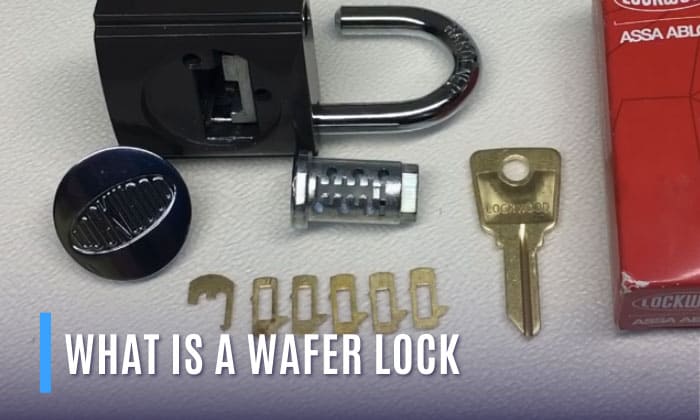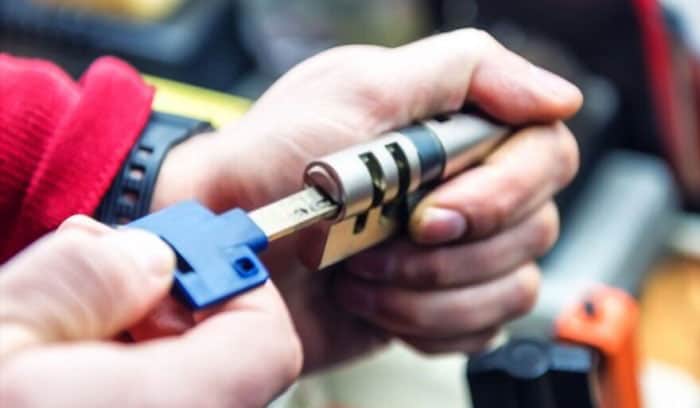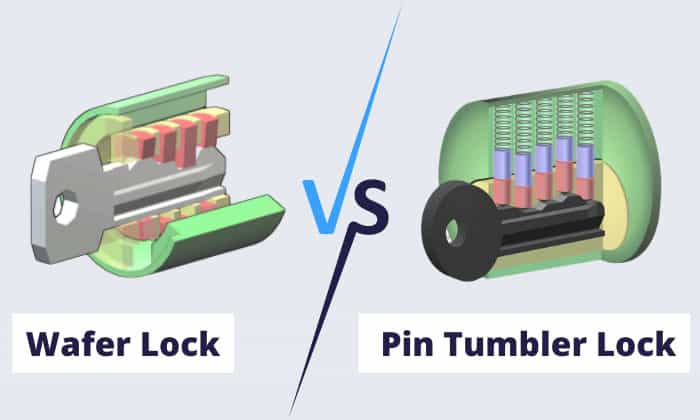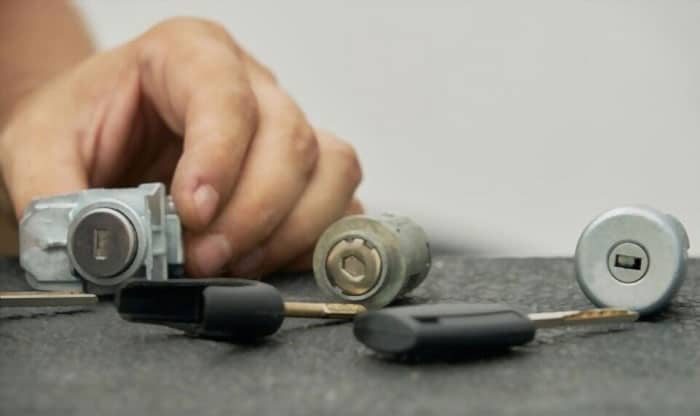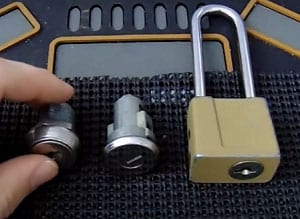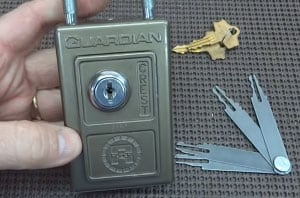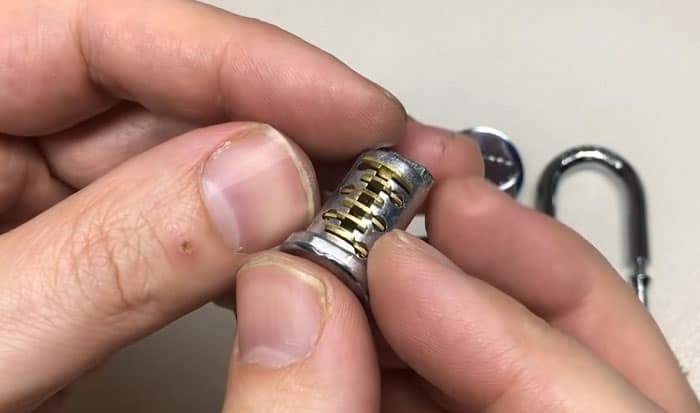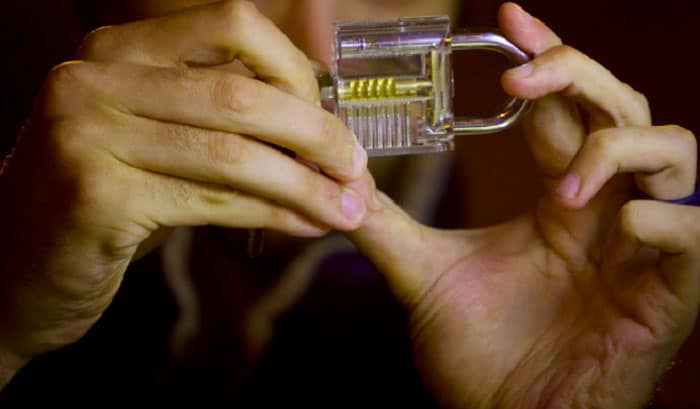Does your house have a desk drawer or an office cabinet? Have you ever had a locker or experienced going through electrical panels? Do you have a car?
If you answered “yes” to any of these questions, then you have seen a wafer lock. Unfortunately, many are confused between wafer locks and disc locks or pin-tumbler locks.
But really, what is a wafer lock?
Simply, a wafer tumbler lock is classified as a low to medium type of security lock used in various environments. It has flat pieces (called “wafers”) that act as a restricting mechanism to prevent unauthorized keys from opening it.
Table of Contents
All About Wafer Lock
Cylinder locks are everywhere; you’ll see them in cars, schools, and your house. And one type of cylinder lock is the wafer lock.
Now, let’s look at what sets this item apart from other types of cylinder locks to grasp how to identify a wafer lock fully.
Wafer Lock Vs Pin Tumbler Lock
Pin tumbler and wafer locks are considered cousins in categorization as both share similar mechanisms and operations. This makes the wafer lock vs pin tumbler discourse common.
Both locks have essential components that either give entry or restrict certain key cuts or bittings from turning and opening the lock. They are the driver and key pins for pin tumbler locks and the wafer for the wafer lock.
Wafer locks have a set of single-piece wafers, while pin tumbler locks have 2 (or more) pieces for each pin to operate the lock.
Moreover, the wafer lock is less of a standard lock than the pin tumbler lock.
Parts of the Wafer Lock
Now that you know what a wafer lock is, let’s look at a wafer lock diagram and define each part.
1. Plug housing
The plug housing is the part of the lock that houses both the plug, springs, and wafer tumblers.
Aside from keeping the three mentioned parts in place, it is also responsible for blocking the rotation of the plug when the wrong key is used.
2. Wafer tumblers
The wafer tumblers are pieces of flat metal located inside the plug.
The series of wafers are the parts that react to the key cuts or bittings. When the wrong wafer lock key is inserted, it will make the wafer protrude, which will keep the plug in place and the door secure.
3. Springs
The wafer springs are responsible for ejecting the wafer towards the cylinder. The spring attached helps the wafer and the housing work together.
4. Plug
The plug is simply the rotating part of the wafer lock. It has the wafer tumbler and wafer springs, which are also inside the plug housing.
The key enters the keyway inside the plug and the wafer hole. And if the correct key is used, the plug will have no problem rotating and engaging the lock’s bolt mechanism.
5. Cam
On the other hand, the cam works together with the plug to activate the bolt and open or lock the lock. The cam has an attached arm that will rotate when the plug has been turned.
Because of the simplicity of their components, many locksmiths found wafer locks easier to deal with compared to other types of locks. Also, you can easily find a wafer lock rekey kit, and picking wafer locks is easier than bypassing pin tumblers.
Types of Wafer Locks
1. Single wafer locks
The single wafer lock is one of the two primary types of wafer locks. You may tell from its name that the set of wafers inside the plug is only located on one side, unlike in a double-wafer type wherein the tumblers are at both ends of the plug.
Moreover, the wafer lock key for this variation only has bittings on one side. Single wafers have a hole in the middle corresponding to the key’s bitting.
Single-wafer locks are often used in drawers and other cabinets.
2. Double wafer locks
As stated above, the double sided wafer lock has alternating springs and wafers on each end of the plug, meaning the key for this type of lock also has cuts on both ends.
Double-wafer locks are safer than single-wafer ones as they require more effort to pick. Your car may have one of these.
How Wafer Lock Works
Just like any cylinder lock, the wafer lock works by turning the correct key. Its tumblers react to the key cuts and allow the plug to turn, which activates the lock’s cam to lock or unlock your belongings.
The wafer core lock has a series of flat, spring-loaded pieces inside, and they have a rectangular crescent cut at the center, wherein the key goes through and grooves the tumblers to retract them.
The key cuts and the shape of the wafer must correspond to each other in order for the tumbler not to obstruct the lock’s plug. That is crucial in turning the plug and the cam.
Frequently Asked Questions
How do you tell if a lock is a wafer lock?
To identify a wafer lock, look at the size of the keyway. If it’s wider than the usual lock you see in your doorknob, it may be a wafer lock.
Moreover, you can spot the pieces inside the cylinder due to its wide keyway. If they look rectangular, flat, and not pin-like, the object is most likely a wafer lock.
Are wafer locks hard to pick?
No, it is not hard to pick a wafer lock. Just like its cousin, the pin tumbler lock, all you have to do is to have a raking tool to make it work.
Insert the tension lever, apply the appropriate pressure, and rake the wafer lock open.
Why are wafer locks so easy to pick?
Every cylinder lock is vulnerable to tampering. What makes wafer lock easier to bypass by the wafer lock jigglers is the fact that it has a wide keyway, making the raking or picking process much easier.
Conclusion
The question “are wafer locks bad?” might get a subjective answer because it varies depending on the type of security you’ll need.
Now that you read through this guide, I hope this helps you learn what is a wafer lock, its qualities, and its components. Knowing such things will help you decide where to install and when it is necessary to have a wafer lock.

I am the last member to join Revolar and might be just the luckiest to work with dedicated people like Teddy and John. Our team has established a process where my only job is writing the best content to deliver incredible ideas and guides.


